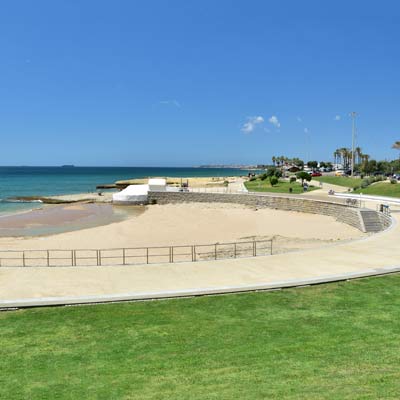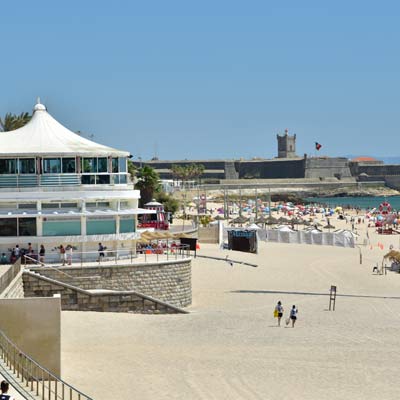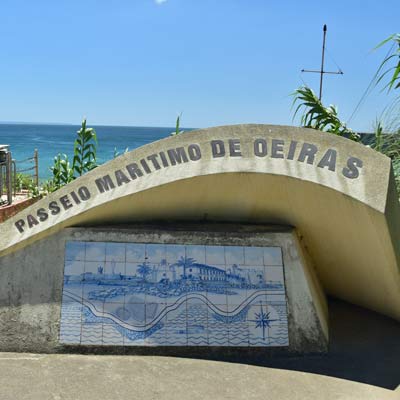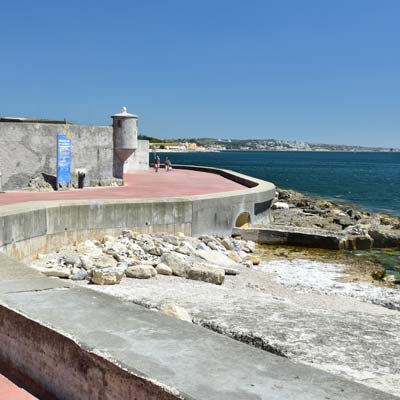LisbonLisboaPortugal.com
The best independent guide to Lisbon
LisbonLisboaPortugal.com
The best independent guide to Lisbon
Praia de Carcavelos Beach, Lisbon - a guide for 2025
The Praia de Carcavelos is one of the finest beaches of the Lisbon coastline.
The beach provides soft golden sands, clean sea waters and extensive tourist facilities, including cafes, restaurants, beach sports and water activities. Carcavelos is a vast and lively beach, and is the best location for a beach focused day trip from Lisbon.
The Praia de Carcavelos is suitable for all ages, from families with young children through to adults, and is extremely popular with the residents of Lisbon, who flock to the beach during the summer months.
Under the right weather conditions, the Praia de Carcavelos provides decent surfing waves and the surf schools based on the beach make it a popular place to learn to surf. Carcavelos is easy to travel to from Lisbon, as it is served by the Lisbon-Cascais urban railway, while behind the beach is a large cark park if you plan to drive.
This article will provide a guide Carcavelos beach, along with travel information, tourist details and activities in the surrounding region.
Our opinion: If you are new to the Lisbon region and you are planning your first day trip to the beach, then the Praia de Carcavelos is the best choice.
Related articles: Lisbon beach guide – Cascais guide
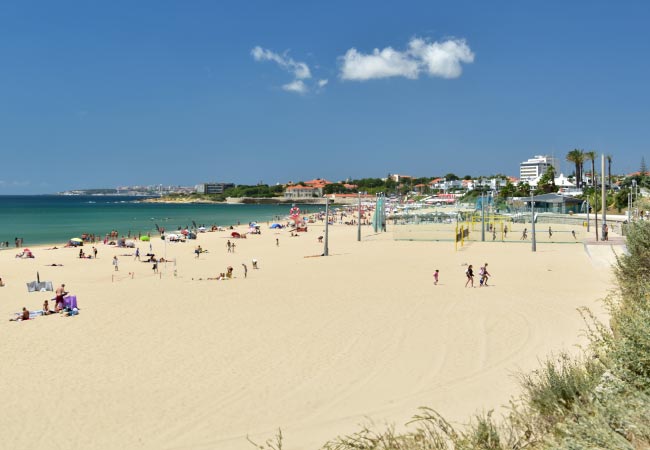
The glorious beach at Carcavelos
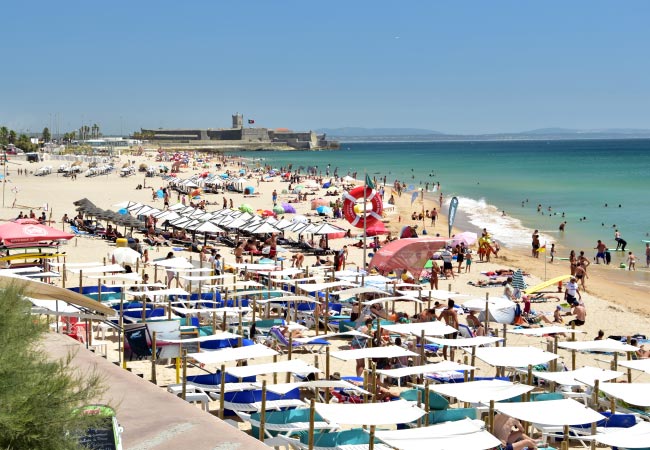
Praia de Carcavelos is the most popular beach of the Lisbon coastline
Is Carcavelos beach worth visiting?
Carcavelos is fantastic for a relaxing beach day, of basking under the glorious sun and splashing around in the cold sea. The area attracts an equal mix of Portuguese and foreign tourists.
It is the largest beach of the Lisbon-Estoril-Cascais coastline, with a sandy shoreline extending for 1.5km. The sea waters are far enough away from the mouth of the Tejo Estuary to be consistently clean, and are suitable for swimming or surfing in.
The sea temperature is always cold, being strongly influenced by the Atlantic Ocean, and varies from a high of 18C (64F) in August to a low of 14C (57F) in February.
The beach tends to attract a young and active crowd, and there is always something going on, from a social game of volleyball, through to a much more competitive beach football competition.
Along the beachfront promenade are numerous beach bars and cafes, ideal for a light lunch or to escape the intensity of the summer sun.
Considering the popularity of Carcavelos, it is surprising that there is so little tourist development surround the beach. The beach is not overshadowed by large hotel complexes or ugly apartments, and the actual town of Carcavelos, 1km inland, has a very low-key ambience.
If Carcavelos beach is too busy for you there is a second smaller beach on the opposite to the São Julião da Barra fort, this beach is known as the Praia da Torre.
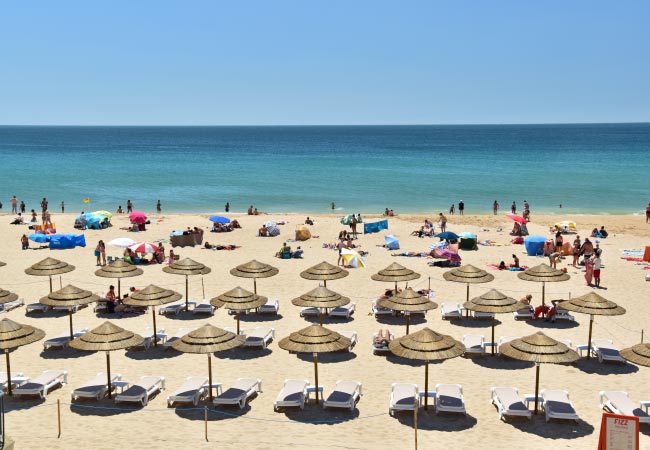
Carcavelos beach has soft golden sands and clean waters
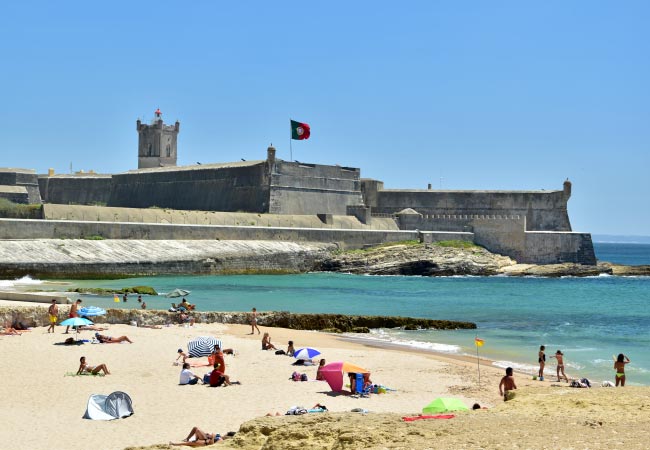
The São Julião fort a great backdrop to the Carcavelos beach
Carcavelos Beach for Surfing
Carcavelos has decent medium-sized waves, which are ideal for beginner to medium surfers or bodyboarding. During the autumn and winter, the waves tend to be more powerful, while in the summer, the sheer number of people in the water can make surfing difficult and sometimes slightly dangerous.
Equipment can be hired for reasonable prices (€15/€20 bodyboard/surfboard with a wetsuit) and there are decent changing facilities and showers.
If you are new to surfing there are popular surf schools based on the beach, and include Carcavelos Surf School and Angels Surf School:
https://www.carcavelossurfschool.com/
https://www.angelsurfschool.com/
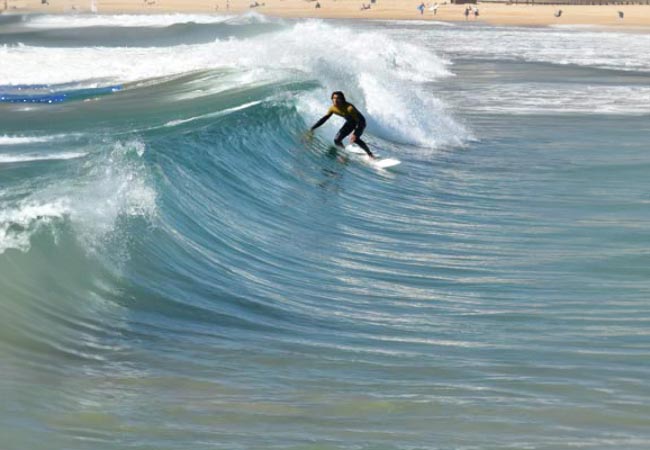
There can be great waves at Carcavelos
Praia de Carcavelos for families
The Praia de Carcavelos is a popular beach with Portuguese families and is ideal for children of all ages. The beach is clean, the waters are safe, and there are good tourist facilities.
During the summer months, the beach is supervised by lifeguards and swimming sections are clearly separated from surfing areas. Young children should be wary of the intense summer sun, but parasols and sunshades can be hired for €20 per day.
The Piscina Oceânica de Oeiras (Oeiras Ocean Swimming Pool) is a great place for children if the sea is too rough or cold. This swimming pool complex also boasts high diving boards and is well set up for families. The entrance fees is €14/€7 (all day/half day) and opening times are seasonal, and further information can be seen on the Oeiras council website:
www.cm-oeiras.pt/pt/descobrir/turismo/Paginas/piscina_oceanica.aspx
The Passeio Marítimo de Oeiras
The Passeio Marítimo de Oeiras is a cycle path and footpath which follows the coastline from the Praia de Carcavelos to the Paço d’Arcos, 3.5km to the east. This is a very scenic route and passes the Oeiras Marina, the Piscina Oceânica de Oeiras, the Santo Amaro fort and Oeiras beach. The Passeio Marítimo de Oeiras is a popular walking route and a favourite with the Portuguese.
The pink footpath begins on the eastern side of the Praia da Torre beach, but is easy to reach from Carcavelos beach; just walk along the beach towards the imposing Forte de São Julião da Barra and then follow the path around the fort.
Travel to Carcavelos (Lisbon to Carcavelos)
One of the reasons that makes Carcavelos such a popular beach is that it is very easy to travel to, being served by the Lisbon-Cascais urban railway.
No tourist should be deterred from visiting Carcavelos beach because of using public transport; the train is safe, hassle-free, and suitable for people with limited mobility or families with young children.
In Lisbon, the train to Carcavelos departs from the Cais do Sodré train station, which is the final stop on the green metro line.
As the Lisbon-Cascais railway is an important commuter route there are numerous hourly departures, and the trains start early in the day and continue to 1:30am. The journey from Lisbon to Carcavelos takes 26 minutes, and the latest timetable can be seen on the CP (Comboios de Portugal) website at:
www.cp.pt/
(link opens new tab)
The train fare from Lisbon to Carcavelos pass through three fare zones, and a single ticket costs €2,10. The fare is charged to the reusable "Navegante" card, which is used for all of the public transport in Lisbon, and the initial price for this card costs €0.50.
In the Cais do Sodré train station there are many ticket machines with instructions in multiple European languages which are much quicker than waiting for the ticket office.
Carcavelos train station is in the centre of the town and is a 700m walk to the beach. The route is along a flat tree-lined road, and is well signed, but it is much easier to just to follow the crowd of other beachgoers.
Insight: If the walk to the beach is an inconvenience consider the Praia do Tamariz, in Estoril, which is directly next to the train station.
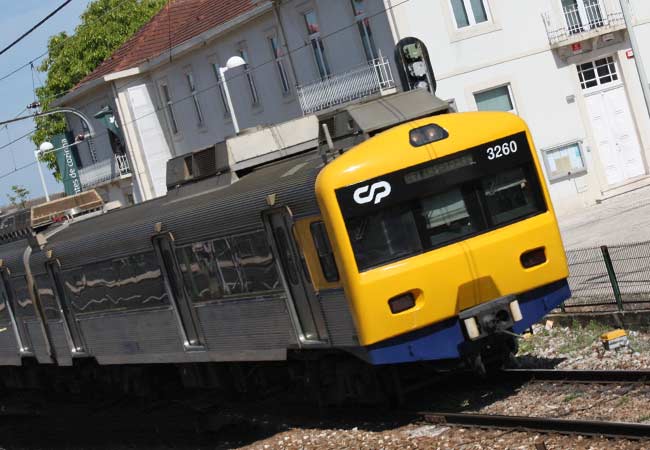
The train to Carcavelos beach
If you plan to drive, Carcavelos is 20km from central Lisbon, and the route follows the scenic N6 coastal road, which outside of rush hour takes around 25 minutes. At the beach, there is plenty of car parking, and if you’re willing to park on the field there is free car parking. There is much more parking at Carcavelos than in Cascais or Estoril, and this makes Carcavelos a better choice of beach if you plan to drive.
Praia de Carcavelos Random Facts
At the eastern edge of the beach is the mighty Forte de São Julião da Barra, this fort used by the Portuguese army and not currently open to the public.
The São Julião fort, marks the mouth of the Rio Tejo; therefore Carcavelos beach technically opens out onto the Atlantic Ocean while everything to the east faces the River Tejo.
During the early 20th century, Carcavelos beach was the sole connection point for the America to Europe telegraph network. The cables that ran out from the beach once handled all of the telegram and early phone calls communicated between Europe and the Americas.
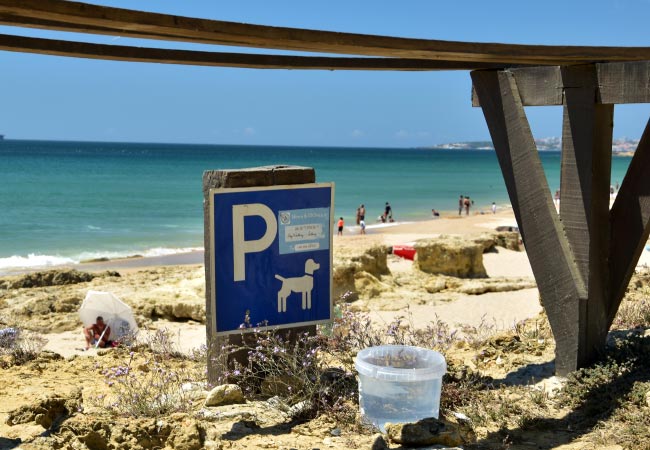
Even dogs are catered for.....
The Praia de Carcavelos was the filming location for the very bland Euro-dance song Amazing by Inna (2010), the song was very average, but the video makes Carcavelos beach look fantastic.
On Thursdays, there is a large market held on the fields behind the beach and is a great chance to experience normal Portuguese daily life.
Discover more of Lisbon with our most popular guides
If you've found our content valuable, we'd welcome your support.
The digital publishing landscape has evolved significantly. As a small independent publisher, we face growing challenges. Search engines increasingly favour paid content over organic results, while AI-generated content often reproduces original work without attribution.
To support our work, please consider bookmarking this page (press Ctrl + D) for quick access. If you find an article helpful, we'd be grateful if you'd share it with friends on social media.
For specific questions, please see our Reddit community at r/LisbonPortugalTravel.
Should you notice any outdated or incorrect information, please contact us at [email protected]
Thank you for helping us continue to provide valuable content in an increasingly challenging digital environment.
A complete list of all of our Lisbon articles
If you've found our content valuable, we'd welcome your support.
The digital publishing landscape has evolved significantly. As a small independent publisher, we face growing challenges. Search engines increasingly favour paid content over organic results, while AI-generated content often reproduces original work without attribution.
To support our work, please consider bookmarking this page (press Ctrl + D) for quick access. If you find an article helpful, we'd be grateful if you'd share it with friends on social media.
For specific questions, please see our Reddit community at r/LisbonPortugalTravel.
Should you notice any outdated or incorrect information, please contact us at [email protected]
Thank you for helping us continue to provide valuable content in an increasingly challenging digital environment.
